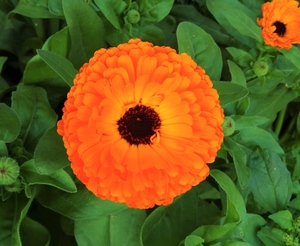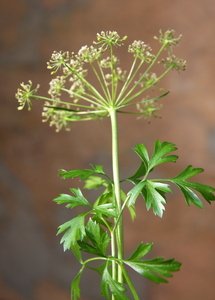Permaculture companion plants for Chili
| Image | Name | Data | Description | Actions |
|---|---|---|---|---|

|
Pot marigold |
2-11
Full sun, Partial sun/shade
Moist
Light (sandy), Medium, Heavy (clay)
5.5-7.0
0.6
0.3
Annual
Medium
15cm
6-14 days
21°c (70°f)
60
Compost, Cosmetic, Dye, Essential Oil, Weather forecasting, Dynamic accumulator, Fragrance
Flowers, Leaves
Calendula, Common marigold, Scotch marigold, Ruddles
Ringelblume
Asteraceae or compositae
Spain
Afghanistan, Albania, Argentina Northeast, Argentina Northwest, Argentina South, Assam, Austria, Azores, Baleares, Baltic States, Belarus, Belgium, Bolivia, Borneo, British Columbia, Bulgaria, California, Canary Is., Central European Rus, Chatham Is., Chile Central, Chile North, Chile South, China North-Central, China South-Central, China Southeast, Colombia, Connecticut, Cook Is., Corse, Costa Rica, Cyprus, Czechoslovakia, East Aegean Is., East European Russia, East Himalaya, Ecuador, Ethiopia, France, Germany, Great Britain, Greece, Guatemala, Hainan, Honduras, Hungary, India, Iraq, Ireland, Italy, Jawa, Juan Fernández Is., Kazakhstan, Kriti, Krym, Lebanon-Syria, Lesser Sunda Is., Libya, Madeira, Maine, Malaya, Manchuria, Massachusetts, Mauritius, Mexico Southeast, Michigan, Morocco, Myanmar, Nepal, Netherlands, New Hampshire, New South Wales, New York, New Zealand North, New Zealand South, Newfoundland, North Caucasus, North European Russi, Northern Territory, Northwest European R, Norway, Nova Scotia, Ohio, Ontario, Pakistan, Paraguay, Pennsylvania, Peru, Philippines, Poland, Portugal, Primorye, Qinghai, Queensland, Québec, Romania, Sardegna, Sicilia, South Australia, South European Russi, Sulawesi, Sumatera, Sweden, Switzerland, Tadzhikistan, Taiwan, Tasmania, Tibet, Transcaucasus, Trinidad-Tobago, Turkey, Turkmenistan, Ukraine, Uruguay, Uzbekistan, Victoria, Vietnam, Washington, Western Australia, Wisconsin, Xinjiang, Yugoslavia
https://en.wikipedia.org/wiki/Calendula_officinalis
https://pfaf.org/User/Plant.aspx?LatinName=Calendula officinalis
https://powo.science.kew.org/taxon/urn:lsid:ipni.org:names:187894-1
4.6
Colouring, Tea
true
|
The pot marigold, also known as Calendula officinalis, is a flowering plant probably native to southwestern Asia, western Europe, and the Mediterranean region, however, its long cultivation history makes its precise origin unknown. It is a herbaceous annual plant that typically grows to be about 12-18 inches tall, with hairy stems and leaves. The leaves are lance-shaped, with a hairy surface, and the flowers can range in colour from white through yellow and orange to red and even pink. In terms of growing conditions, the pot marigold prefers well-drained soil and full sun, although it can tolerate partial shade. It is winter hardy, but may not flower as profusely in colder climates. To cultivate it successfully, a grower should plant pot marigold seeds directly in the ground after the last frost of the season. The pot marigold has a number of uses, both culinary and medicinal. The flowers are edible and can be used to add color and flavor to salads and other dishes. The petals can also be dried and used to make tea. In terms of medicinal uses, the plant has been used for centuries to treat a variety of ailments, including wounds, infections, and skin irritation. The pot marigold is also attractive to a variety of pollinators, making it a valuable plant for attracting beneficial insects to the garden. Overall, the pot marigold is a versatile and easy-to-grow plant that is well-suited to a variety of garden settings. ### Propagation - Direct sow Direct sow in spring when light frost is still possible. Can be sown until early summer for fall blooms. ### Propagation - Transplant Sow indoors in late winter, transplant outside when risk of heavy frost has passed. #### Links [Calendula @ West Coast Seeds](https://www.westcoastseeds.com/products/zeolights-organic) |
Show
Edit |

|
Parsley |
5-8
Biennial
Full sun, Partial sun/shade
Moist
Light (sandy), Medium, Heavy (clay)
0.6
Herbs
true
Leaves
https://en.wikipedia.org/wiki/Parsley
Medium
Apiaceae or umbelliferae
Petersilie
https://pfaf.org/User/Plant.aspx?LatinName=Petroselinum crispum
Algeria
Greece, Morocco, Yugoslavia
15cm
https://powo.science.kew.org/taxon/urn:lsid:ipni.org:names:60442790-2
Colouring, Tea
Essential Oil, Hair, Dynamic accumulator, Fragrance
|
Parsley is a herb native to the central and eastern Mediterranean region. It has bi-pinnate leaves and small, white or green flowers. The plant grows to a height of about 30 cm and has a fast growth rate. It can be differentiated from similar plants by its bi-pinnate leaves and small, white or green flowers. Parsley prefers well-drained soil and full sun to partial shade. To cultivate it successfully, a grower may need to water it regularly and protect it from frost. The plant is winter hardy and can withstand cold temperatures. Parsley is edible and its leaves and stems can be used in cooking. The edible parts can be stored after harvest by drying or freezing. Parsley has many uses, including medicinal and culinary. It has been used to treat a variety of ailments, such as indigestion and inflammation. In the kitchen, it can be used as a garnish or added to dishes for flavor. Parsley is also a good source of vitamins and minerals, such as vitamins A and C and iron. Parsley is valuable for wildlife as it provides nectar for pollinators. It is also a good source of food for some animals, such as rabbits and deer. #### Links [Parsley @ Wikipedia](https://en.wikipedia.org/wiki/Parsley) |
Show
Edit |